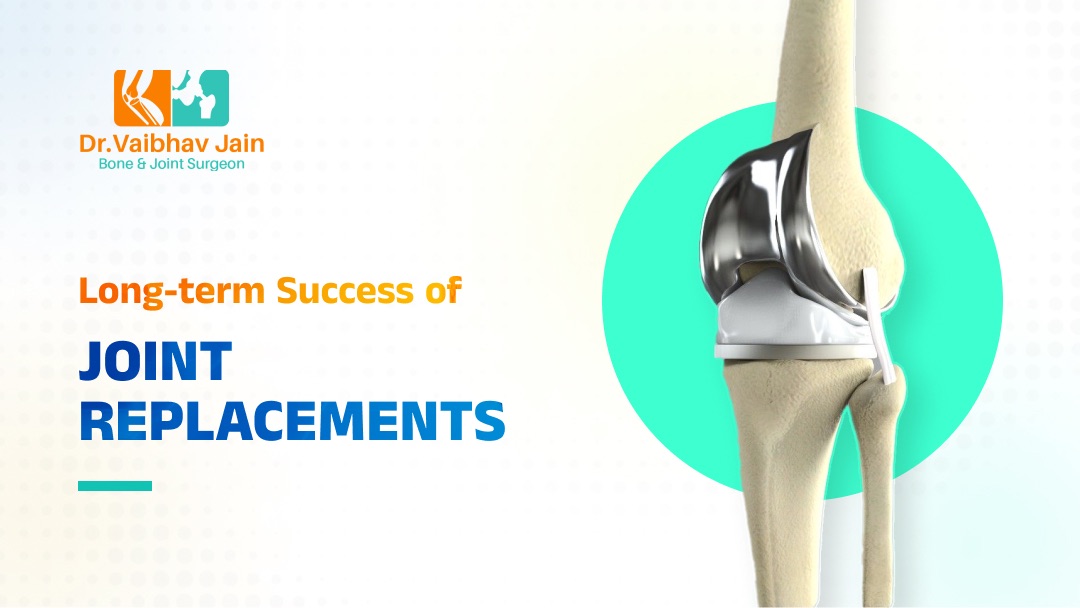How long do joint replacements last
Joint replacement surgery is a major breakthrough. It helps many with severe joint pain and disability. It gives them a new lease on life. But it is a common problem that a patient may have: how long do joint replacements last? Not everyone knows that many factors affect artificial joints. They influence how well and how long they function. It’s important to keep this in mind to avoid future regrets.
The Lifespan of Artificial Joints
The lifetime of joint replacements is reliable but variable and there are reasons for this as well. On average, replaced joints last 15 to 20 years. It depends on the joint, the materials used, and patients’ activities. Yet, new techniques and materials are causing even better results. For instance, studies have reported over “60% of hip replacement and “82%” of knee replacement are expected to last over “25 years”.

Factors Affecting Joint Replacement Longevity
Parameters that influence the longevity of joint replacements include
Age of the Patient
Young patients are expected to have a lot of activities that make them tear the artificial joint but on the contrary, due to age factors, older patients do need revision surgery earlier than younger patients with the same problems.
Weight
Excess weight whether apportioned to fat or muscle adds strain on the joint and may lead to early failure. One could maintain this stress at lower levels through achieving and maintaining an appropriate body weight after surgery.
Surgical Technique
This implies that the surgeon’s skill and experience contribute a lot towards the success and joint replacement durability. Correct rotation and correction of the implant position are required for the maximum function.
Material and Design of the Implant
The newest developments in the material and design used in the implants have appreciably enhanced the reliability of the joint replacements. Contemporary implants which include metals and plastics are constructed to suit heavy use over a long time.
Long-term Success of Joint Replacements
Joint replacement surgery aims to improve implant durability and patients’ quality of life. Nearly all patients experience dramatic reductions in pain and increased mobility after joint replacement operations. Nevertheless, every procedure has a recovery section, and every patient has to obey the postoperative care and active rehabilitation programs if required.
Monitoring and Maintenance
Monitoring of the status of the joint prosthesis is conducted on the patient through clinic appointments with the orthopaedic surgeon at intervals. If any fault is detected early, chances of complications will be minimized and the life span of the device maximized.
Innovations in Joint Replacement Technology
With the latest technologies, there has been one noteworthy improvement in the prosthesis. For example, supercross-linked polyethylene has been found to reduce knee and hip implant wear rates. Furthermore, ceramic cups for hip implants offered excellent durability and biocompatibility as well.
Another innovation is robotic systems. They eliminate precision errors in joint replacements. This technology reduces the chances of malalignment of the implant which adversely affects the outcome and the longevity of the procedure
Patient Education and Rehabilitation
To prevail in the long run post-surgery, proper patient education, and rehabilitation are said to be critical in attaining these objectives. Right at the beginning or even before the surgical procedure, patients should know how the operation is going to be conducted, the threats of the operation, and what is expected once the operation is completed.
Patients should also be instructed on lifestyle changes that could enhance prosthetic longevity. This includes adherence to a healthy body weight and refraining from high weight-bearing activities.
Symptoms of knee replacement wearing out
| Symptom | Description |
|---|---|
| Pain | Increased knee pain, especially with movement. |
| Swelling | Persistent swelling around the knee. |
| Stiffness | Difficulty in bending or straightening the knee. |
| Instability | Feeling the knee is unstable or “giving out.” |
| Noises | Grinding or clicking sounds during movement. |
| Warmth/Redness | Warmth or redness around the knee, possibly from inflammation. |
| Limited Movement | Reduced range of motion in the knee joint. |
| Walking Trouble | Difficulty walking or standing without support. |
Conclusion
How long joint replacements last depends on several elements: the beneficiary’s age, activity, weight, surgical approach, and the implant materials used. Generally, most prostheses last anywhere from 15 to 20 years, but recent trends have indicated even more durable results due to some innovations in medical technology. By learning what circumvents the long life of a joint prosthesis and abiding by surgery recovery procedures, patients are more mindful of their artificial joints to be able to last them for a long time.
Ready to proceed further? Reach out to an experienced orthopedic surgeon as soon as you can so that you can explore joint treatment alternatives and lead a painless life.






